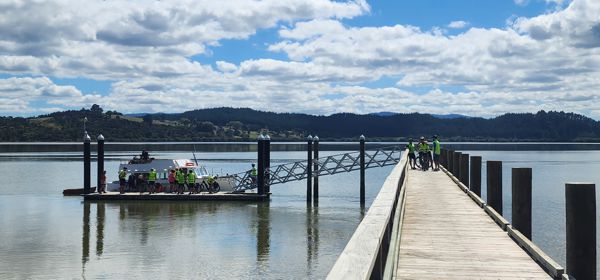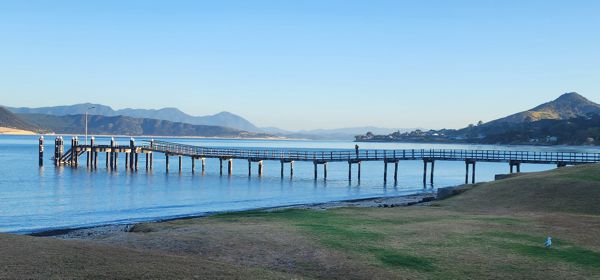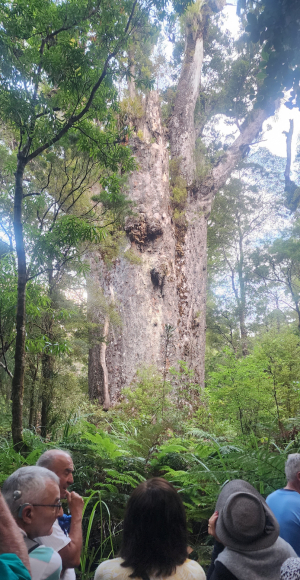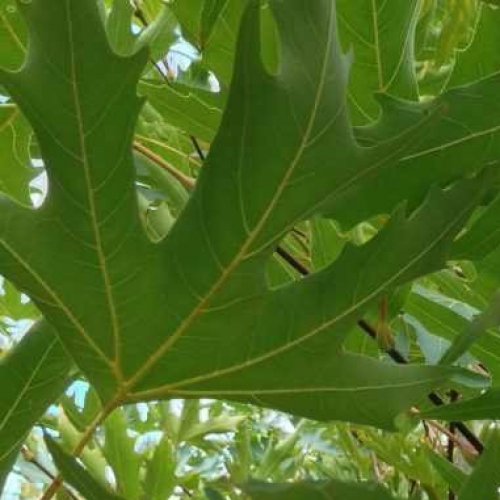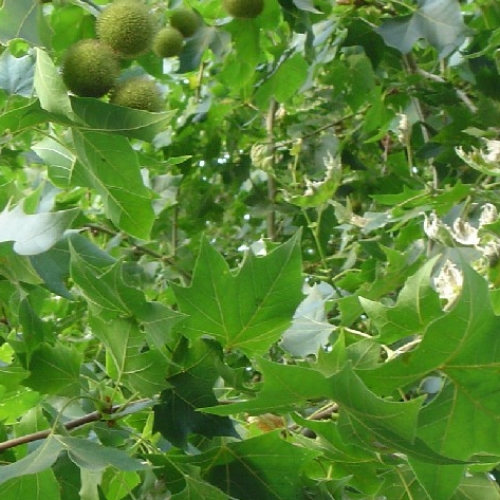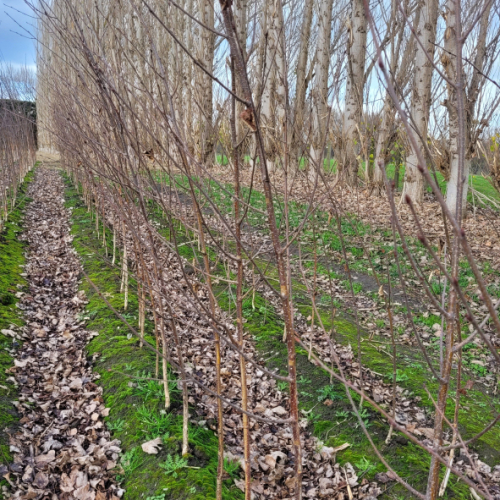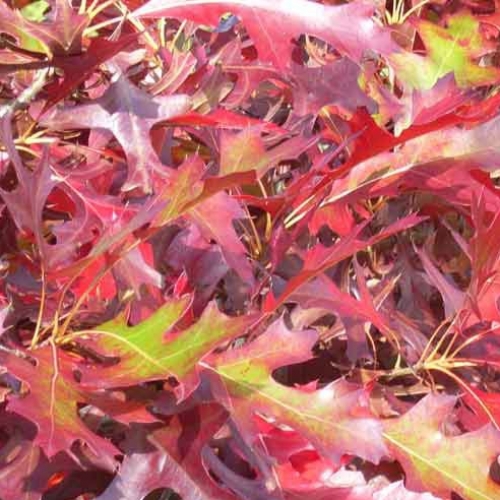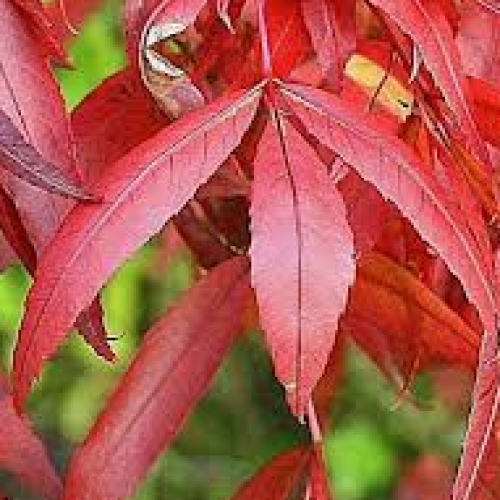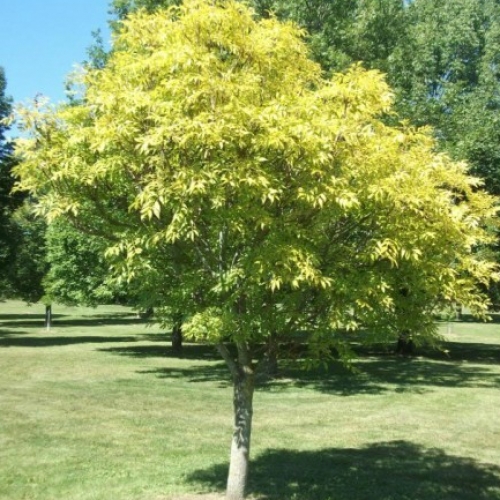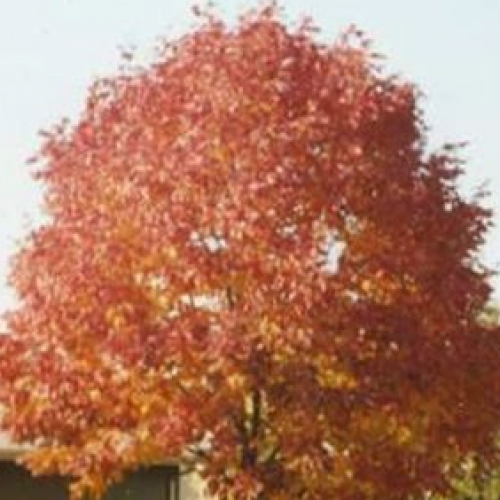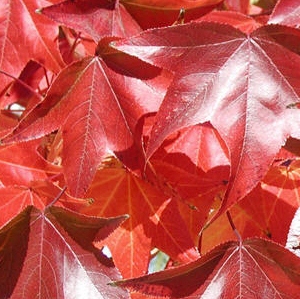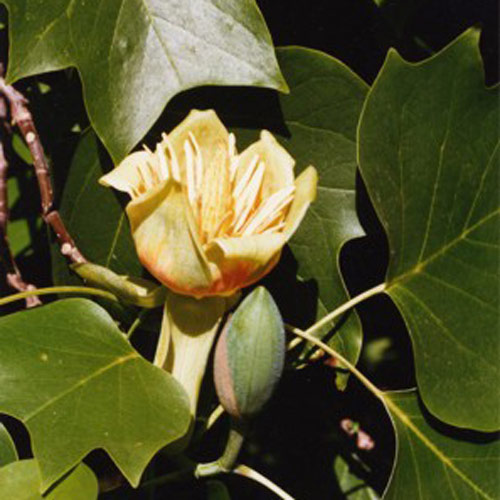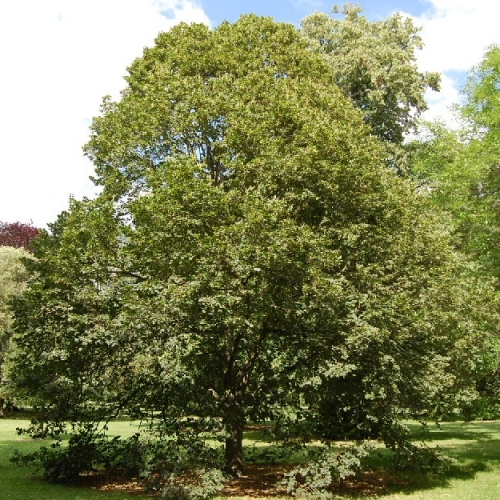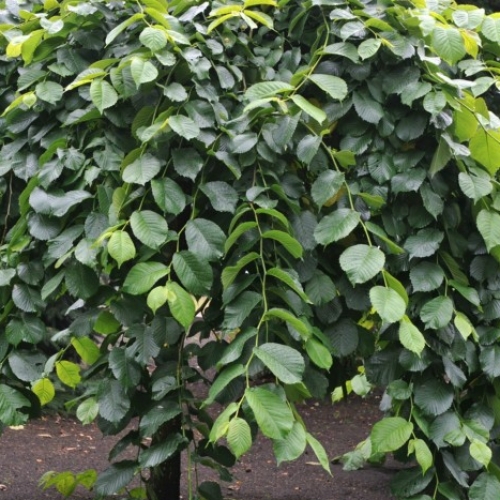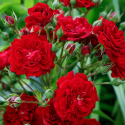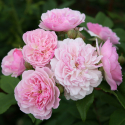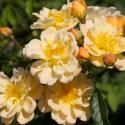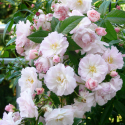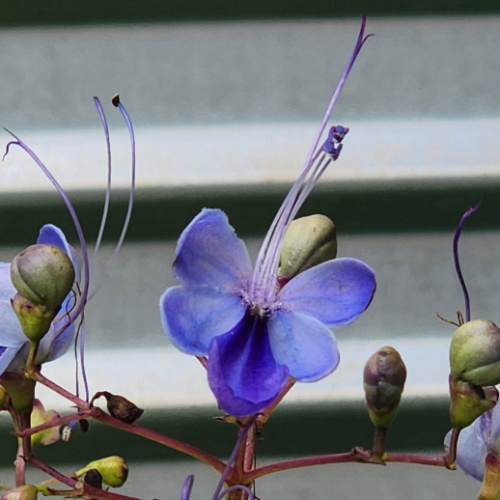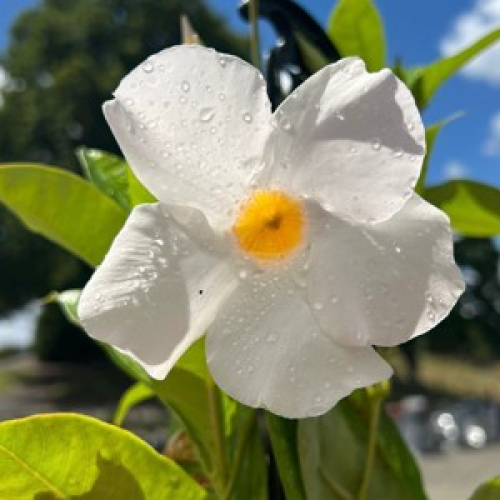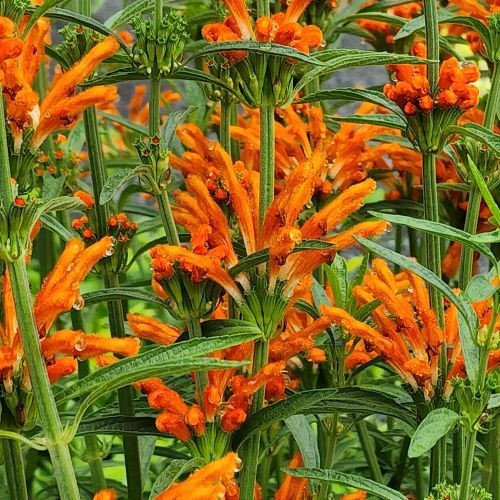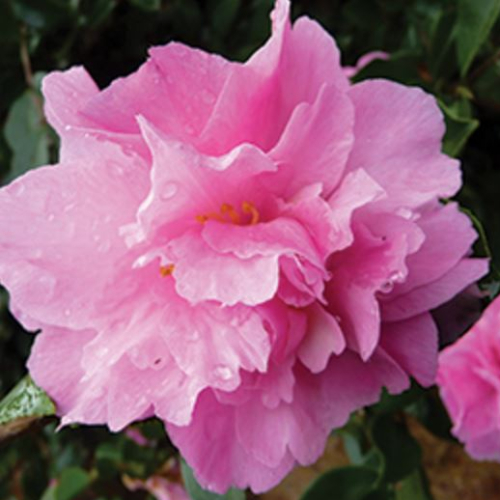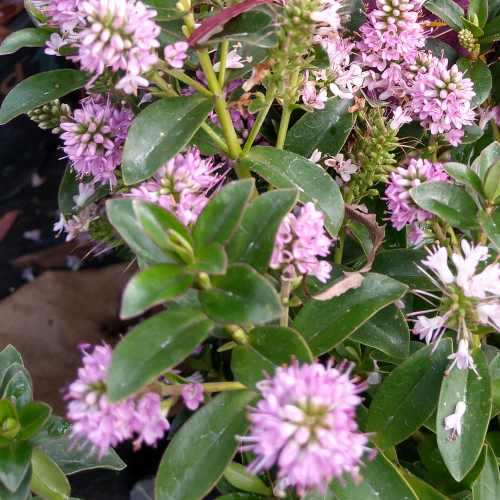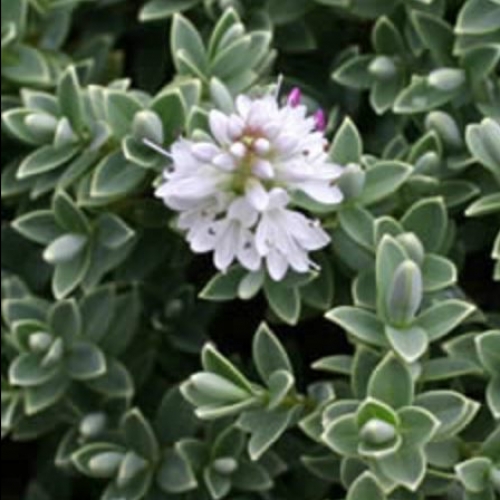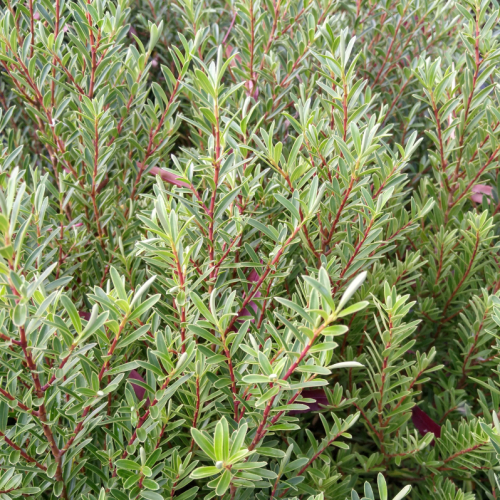Saturday 8th March, 2025
Hi
Trees for paddocks parks and driveways
A big thanks to Tracy for writing last week's email so that I could sneak off for a week with a group of friends that cycle. We covered off the twin coast cycle trail with a Northland Experiences tour called Cook to Kupe. Below are a couple of pics with the views looking across the Hokianga harbour, which was just stunning, though I daresay that we had the best weather ever.
Between cycling, ferries and bike trails and various tours it was a fab experience but one of the highlights for me was the visit to the Waipoua forest to check out a couple of the biggest Kauri around.
These trees being Te Matua Ngahere and also Tane Mahuta. Now we all know that size does matters and so I just have to give you the dimensions of these huge giant trees, not that this will compensate for the actual sighting. Te Matua Ngahere is reputed to be the oldest at 3500 years with a trunk girth of 16.4m, trunk height of around 10m and an overall height of just under 30m. Tane Mahuta is somewhat younger at a reputed 2000 years with a girth of 13.7m, trunk height of 17m and a total height of over 50m, and it is still growing! From my horticultural perspective these trees are just the most magnificent sight to see for several counts; they are so physically large and also just so old that I was in total awe!!!!
You can now imagine how hard it is to be specific about the size of a tree because as they age they just get bigger. However, having said that I do believe that many have a shelf-life or an age bracket as well, though in many cases much longer that our life span. If we look at another example of a tree say
Plane Trees, these have a life span of approx. 200 years but may live 500 or 600 years. Here in NZ growth can be faster and therefore accelerated aging due to our temperate and fertile climate. I imagine that the Plane trees in Steele park must be nigh on a couple of hundred years old to give a local example. Woodlands estate, which is only a few minutes down the road from us, has an impressively large
London Plane that is still relatively young (planted in the early 1900s).
Paddock trees need to have specific attributes including the capacity to grow to a reasonable size and shape, so that they can provide shade for animals. Generally they need to be hardy and often these can be slower growing, which means that their timber is more dense and they tend to have a longer life span than say those that grow quite quickly. I imagine that slower, longer growing trees will tend to be more hardy to wind as well, though this can also depend on the leaf structure that they have as well.
If you are after paddock trees ( or driveway trees ) then
plane trees are a pretty good choice as they grow reasonable quickly, have space for a large numbers of animals underneath, and on top of that they have a long life span.
Tracy and I had a gander around the nursery to see what else that we had in stock right now for the Autumn planting and came across some really nice grades of
Quercus palustrus or the Pin Oak. This is another long lived handsome tree which has quite a reputation for being tough and has attractive orangey red Autumn tones to boot.
Claret Ash or Fraxinus Raywoodii, and another cultivar called
Fraxinus Green Glow, make for stunning large trees but with more lacy foliage.
Raywoodii coined its name for the fact that it has very pretty claret coloured Autumn foliage. Lesser known is
Fraxinus Cimmzan, a species that I don't know as well, but this will also make for a classic large growing typical "ash" like tree to provide park or paddock shade.
Liquidambars certainly make for impressive trees and are famous for their Autumnal colours. There are quite a few clones available with their own distinctive Autumn tones. It is worth noting that
Liquidambars prefer a somewhat more sheltered position away from perhaps those more exposed wind situations.
Tulip trees or Liriodendrons grow into very large trees that have quite the distinctive leaf shape which turn butter yellow in Autumn. I think a great choice because they have the reputation of being so hardy, not only out there in the open but also in the urban landscape as city trees, along with
Plane Trees. I often think that if trees can grow between high rise building, and what appears to be out of the pavement, then they must super adaptable.
European Lime trees or Tilias grow into a large trees with attractive green leaves and when in flower have these cute little green flowers, of which the centre may look like a tiny lime, that the bees also like. Known as robust and more a long lived tree
Of course I haven't covered off all trees suitable for the larger spaces and creating shade and there are many more that you could choose, but perhaps scroll through the list of
Deciduous Trees as there is more selection due in the winter time like
Beech (Fagus),
Elms (Ulmus) and so on. Or next time you are in the nursery, have a conversation with one of the team if you are after more advice.
Siluetta Roses from Kordes Rosen
In 1887 Wilhelm Kordes founded his rose nursery on the outskirts of Elmshorn near Hamburg in Germany. Almost 140 years later the 4th and 5th generation of his family are still breeding and growing roses for the pleasure of gardeners all over the world. We have a special kiwi connection to Kordes in Matthews Roses in the Manawatu, as the Matthews family business imports selected roses for Kiwis. The rose passion has also been been passed down through the Matthews family and they had three generations involved in growing roses. Samantha and her dad, breeder Bob Matthews, have visited the Kordes trial beds and seen their 'no spray' ethos. So, convinced by the value of this practice, the Matthews have adopted a no spray policy for their own trial beds. For roses to be selected for release by both these companies they need to perform well and be super healthy and disease resistant.
The latest release for the NZ market is the Siluetta range which are perfect for smaller gardens. They are unlike anything else seen here before with a nice shape for growing up an obelisk, trellis or as a large shrub. The bendy shoots make them suitable to train and they produce clusters of smaller size (patio) roses over a long period.
Something different, of interest and new in this week
We had these last year and they were popular being the
Blue Butterfly Bush or more correctly
Clerodendron ugandense. This one forms a small bush or shrub to around one metre and has the prettiest porcelain blue flower and, you guessed it, in the shape of a butterfly. These seem to just dance above the shrub. A trim from time to time will keep the shrub bushy. These will grow in full sun or semi shade but in a sheltered spot away from frost.
Mandevillas are climbers but do like a sheltered position, like under a clear covered but open area or out in the open in the right sort of micro climate. I had one growing for several years in a pot around our office which looked very pretty.
Mandevilla Ruby Fantasy has ruby red trumpet flowers and there is also
White Fantasy which has white trumpet flowers with a yellow centre or throat. I have to include
Mandevilla Laxa here also. I have found this one to be more hardy with fragrant white flowers, but you may find that it defoliates in the winter in a cool climate like Hamilton.
Leonotis Leonurus or Lions Ear is a Semi-evergreen shrubby perennial that hails from South Africa. The tall straight stems of aromatic foliage are topped off in summer and autumn with whorls of bright orange, furry, tubular flowers. Very striking.
Marge Miller Standards. Something a bit special is this standardised form of a very prostrate Camellia. They have to be trained upwards initially as a single leader so that they can cascade over. Great for a feature plant in a pot or in the garden where it can take some shade.
Hebes are an interesting group of plants
It difficult to know where
Hebes are taxonomically. They used to be placed in the same family as the snapdragons, officially called Scrophulariaceae, but they have been moved to the family Plantaginaceae. Also,
Hebe used to be the genus name, but now it has become a section within the very large genus named Veronica. But the important stuff is that it seems that almost all 90 species of Hebes are native to New Zealand, with only a small number also found naturally in Australia, south America, the Falklands and French Polynesia. Many of our Hebes are not only native, but also endemic (that is, if we didn't move them around then they would be found in NZ and nowhere else).
It would seem that
Hebes hybridise easily and there are many ornamental cultivars available. In a nut shell, and doing quite but of generalising, hebes are a great mid-height shrub, ranging from about 50 cm to 120 cm, that prefers sun (though will cope with semi shade). They come in a multitude of leaf forms and flower colours which usually range from white through to pinks and purples. On the whole they are pretty easy to grow in most soil types other than wet. A good trim into green wood after flowering will keep them bushy for more years. A great filler in the garden with the bonus of flowers that attract the bees. We have a great range available, so follow the
link to check them all out.
Garlic season is imminent and now is the time to add some to your waitlist as it did arrive in early last year; be sure to secure yours. I had a really successful year last season with my
Elephant Garlic that I harvested about 6 weeks ago.
Elephant garlic is delicious roasted with your vegetables like potatoes and pumpkin but of late I have been doing it with egg plant and red onions that I have had in abundance this year. This winter coming I am going to make sure that I get a crop of
Printanor into the garden as well.
Gordonton Art and Design Trail
Gordonton Art and Design Trail is back again and will be held on Saturday April 6th, and Sunday April 7th (10 am to 4 pm both days). Entry is free, so mark the event in your calendar. Artists will have work for sale and our own Anthony Skinner will be participating.
14 mls of rain the other day, much darker mornings, and it's definitely been cooler the last few days. The
Deciduous Trees are all very much showing signs of Autumn though I daresay that the dry summer has brought that on. The seasons are on the move again as we move into our next growth phase before the winter. It's looking to be a fine weekend and so I'm out there planting my vege garden for the winter. Pretty much we are self-sufficient as far as fruit and vege go here. There is nothing better than fresh food straight from garden to table, though what-ever is ready will have to be your fav food to eat lol.
Have a fab gardening weekend and make the most of the glorious Autumn days.
Cheers from Lloyd, Tony and the Wairere team.
